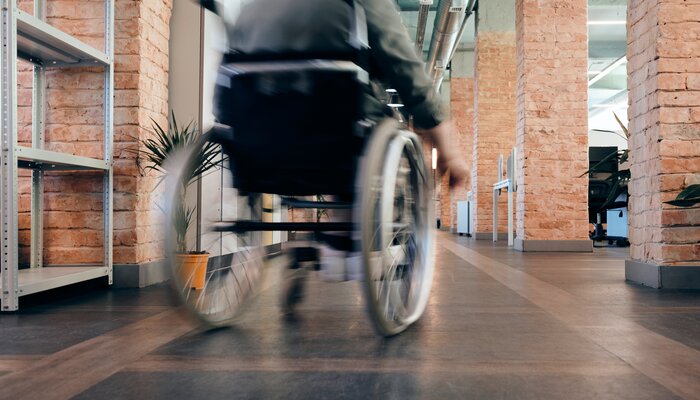To prove negligenceA legal concept where a party fails to exercise reasonable care, resulting in harm to another person... in medical malpractice, we begin by establishing the doctor-patient relationship, which confirms the legal duty of care. Next, we need to demonstrate that the healthcare provider breached this duty by deviating from accepted standards of care. After that, we must show that this breach directly caused the patient's injuries. Finally, we have to present evidence of the resulting damages, including medical expenses, lost income, and emotional distress. Understanding each step in this process is essential to successfully proving negligence in a medical malpractice case. If you continue, you'll grasp these steps more thoroughly.
Key Takeaways
- Establish a doctor-patient relationship to confirm the duty of care owed by the healthcare provider.
- Demonstrate a breach of duty by showing deviation from the accepted standard of care through expert testimony.
- Prove causation by linking the healthcare provider's negligence directly to the patient's injuries with expert analysis.
- Show resulting injuries using medical records, imaging studies, and testimony to illustrate the harm caused by the negligence.
- Present evidence of damages, including financial losses, future medical expenses, and emotional tolls, through documentation and expert evaluations.
Establishing Duty of Care

In medical malpractice cases, establishing responsibility for care is where we begin to build our argument. First, we need to confirm that a doctor-patient relationship exists. This connection establishes the legal obligation, or duty of care, that the healthcare provider owes to the patient. Without this relationship, there's no duty and hence, no case for medical negligence.
Next, we must define the standard of care expected in the specific situation. This standard is based on what a reasonable physician with similar training and experience would have done. It's essential to understand that the duty of care isn't universal but tailored to each case.
Proving responsibility for care sets the foundation for showing the healthcare provider's responsibility. By demonstrating that the provider had an obligation to adhere to a certain standard of care, we can argue that they were required to act in the patient's best interest. This step is crucial in holding healthcare providers accountable for any breaches in their duties.
Establishing responsibility for care is a fundamental step in the legal process of proving medical negligence. It's our first move to ensure that healthcare providers are held responsible for their actions.
Proving Breach of Duty
Once we've established that a duty of care existed, our next step is proving that the healthcare provider breached this duty. In medical malpractice claims, this means we need to show that the doctor's actions deviated from the accepted standard of care.
The standard of care is what a reasonable physician would have done under similar circumstances. This is an important comparison because it helps us establish whether the healthcare provider's actions were appropriate or fell below what's reasonably expected in the medical community.
Expert testimony becomes vital to prove medical negligence. Medical experts help us determine if the doctor's decisions or actions represented a breach of care.
These experts analyze the situation and explain how the healthcare provider deviated from the standard of care, thereby supporting our case.
Demonstrating Causation
Demonstrating causation is a vital aspect of proving medical malpractice. To establish causation, we need to show that the doctor's negligence directly led to the patient's injuries. This involves proving two types of causation: cause-in-fact and proximate cause.
Cause-in-fact means demonstrating that the doctor's negligence more likely than not caused the harm. It's like saying, "but for the doctor's actions, the injury wouldn't have occurred."
Proximate cause, on the other hand, connects the negligence to the injury's direct consequences. Essentially, we've to prove that the doctor's negligence set off a chain of events leading to the patient's injuries without any significant intervening factors.
Expert testimony is vital in this process. Medical experts can explain how the doctor's specific actions caused the patient's injuries. They can also help us identify other potential factors that might've contributed, thereby solidifying the proximate cause.
Showing Resulting Injuries

How do we effectively show the resulting injuries in a medical malpractice case? To start, we need to establish a direct link between the negligent actions and the harm suffered by the patient. This means proving that the negligence directly caused the resulting injuries.
Medical records are fundamental in this process. They provide documentation of the patient's condition before and after the alleged negligence. Detailed medical reports and imaging studies help quantify the injuries, making it clear how the malpractice impacted the patient's health. Expert testimony is also pivotal. Medical experts can explain the connection between negligence and harm, offering professional opinions that validate our claims.
We must also consider the extent of the physical, emotional, and financial damages caused by the negligence. This helps us demonstrate the profound impact on the patient's quality of life. The severity and long-term effects of the injuries play a significant role in proving the harm suffered.
Presenting Damages Evidence
When it comes to presenting damages evidence in a medical malpractice case, we need to be thorough and precise. To effectively seek compensation, we must demonstrate the financial losses and emotional toll caused by the medical negligence. This involves presenting concrete proof of future medical care expenses, lost income, and the pain and suffering endured by the plaintiff.
Documented medical bills and pay stubs are vital in illustrating the financial impact of the malpractice. For instance, if a patient now requires ongoing treatment due to a doctor's error, we need to show future medical care expenses.
Similarly, if the patient can no longer work, we must provide evidence of lost income, highlighting the economic strain.
Expert testimony plays a significant role in establishing the extent of damages. Medical experts can explain how the negligence directly caused the disability or mental distress, while financial experts can quantify the economic losses.
Additionally, documenting the plaintiff's pain and suffering through personal accounts and psychological evaluations helps to paint a detailed picture of the emotional impact.
Frequently Asked Questions
What Are the 4 Elements Necessary to Prove Negligence or Malpractice?
To prove negligence or malpractice, we need to establish four elements: duty of care, breach of duty, causation, and damages. These show the healthcare provider's obligation, failure, a direct link to harm, and the patient's suffered losses.
What Are the 4 Criteria That Must Be Met in Order to Prove Medical Malpractice? Are Duty Breach Damages and Causation?
To prove medical malpractice, we must establish a duty of care, show a breach of that duty, demonstrate causation of injuries, and present compensable damages. Meeting these criteria is essential for a successful lawsuit and compensation.
What Five 5 Elements Needed to Be Present to Prove Malpractice?
To prove malpractice, we need to establish five elements: duty of care, breach of duty, causation, injury, and compensable damages. We must show the doctor-patient relationship, negligence, direct injury, and the resulting losses.
What Four Elements Must a Patient Prove to Win or Be Successful in a Medical Malpractice Case?
We must prove four key elements to win a medical malpractice case: the doctor's duty of care, a breach of that duty, causation linking the breach to injuries, and actual damages like medical expenses or lost income.
Conclusion
To sum up, proving negligence in a medical malpractice case requires us to establish a duty of care, demonstrate a breach of that duty, show a direct link between the breach and the injury, and present solid evidence of the resulting damages. By understanding and following these steps, we can effectively build a compelling case. Let's be vigilant and proactive in protecting our rights and ensuring accountability in healthcare.






